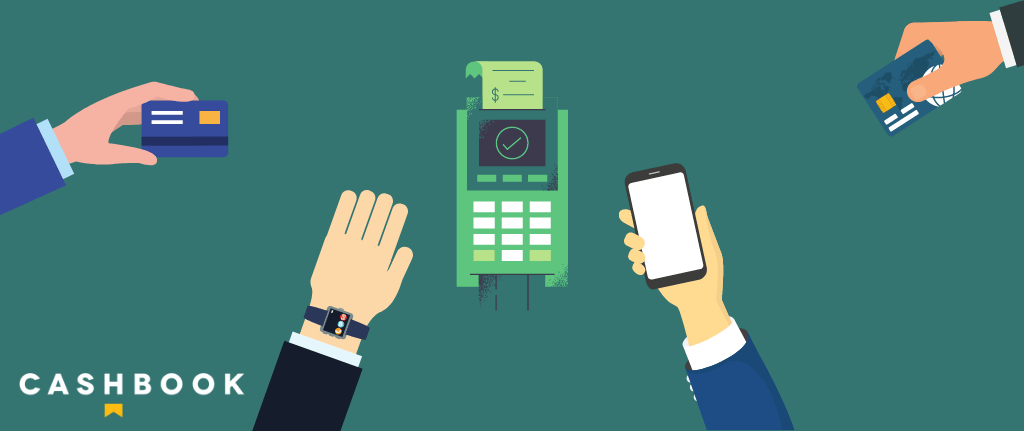November 30th, 2021
Are we destined for a cashless society in the future?

With all of the advancements in fintech and specifically in payments technology over the last 10 years, it has got us thinking – is cash becoming a thing of the past? Are we all destined for a cashless society in the future? We get into the details of how this has come about, the pros and cons, and real-life examples later. But first what is a cashless society?
Description of a cashless society.
A cashless society describes an economic state in which financial transactions are not conducted with physical notes or coins. But are payments made with debit/credit cards, use of mobile payment apps, mobile wallets, internet banking, cashless point of sales (POS) systems, and other forms of digital payment technology. What does this practice look like in our day-to-day lives?
What does a cashless society look like?
Due to the evolution in payment and mobile technology, cash is being used less now as a type of payment than ever before. This is especially true amongst the younger, more tech-savvy generation. Cash always had competitors, mainly in the form of checks and later credit/debit cards. Those long-standing competitors were present for decades but cash was always the ‘king’. That seems to have been flipped on its head now, with electronic payments way out in front of both cash and checks.
People can make mobile payments via smartphones and smartwatches thanks to digital wallet technology such as – “Apple Pay”, “Google Pay” and “Samsung Pay”. These allow you to store credit/debit/gift/membership cards on your devices. Many people don’t use physical wallets/purses any longer as they don’t need to carry cash/cards. All you need is your preferred device and hope that the battery doesn’t die while you’re shopping.
Cashless payments and a pandemic
Today, almost every shop that you frequent is set up to take cashless payments. Some shops even prefer it that way and explicitly promote “no cash accepted” or “contactless preferred”. This phenomenon was accelerated due to the pandemic and the false notion that Covid-19 was transmitted through banknotes. Contactless payment limits were even increased by most providers to avoid cash usage and touching payment terminals.
Outlets that were mainly cash and checks pre-pandemic had to adapt payment infrastructures and go online literally overnight. This was due to the forced store closures and stay-at-home government advice in many countries globally. All shops are now set up for electronic payments and are not looking backward. Today, most banks charge higher fees to consumers for withdrawing cash at ATMs than they charge for making electronic card payments. This tells you everything you need to know about their stance and the way things are moving.
Outdoor farmer’s markets and small independent businesses that sell products at them now have mobile payment facilities. This is thanks to companies like “Square”, “SumUp” and “Stripe” for making it more affordable. This was not realistic previously due to steep merchant services fees. Small business owners can be thankful for this change as most of their customers walk around cashless. Even buskers on the streets in city centers are now taking electronic payment donations, as they see cash usage dip to levels that affect earnings.
Example of a real cashless society in action – Sweden.
Sweden in the Scandinavian region of Europe is one of the leaders when it comes to becoming a cashless society. Sweden aims to become the first nation in the world to be totally cash-free by 2023, with 100% digital payments across the board. Data from the European Payments Council shows that this trend is being achieved. It highlighted that cash payment accounted for just 1% of Sweden’s GDP in 2019, and their ATM cash withdrawals are falling by 10% year on year.
According to Sweden’s central bank, in the last decade, the percentage of Swedes using physical cash has dropped to just 9% from 39%. In shops and cafés, it’s very common to find “Card only” signs displayed. As in other countries, online shopping is popular with Swedish shops making a lot of sales via their online presence. Eurostat found that 84% of the population made online purchases in 2020, ranking Sweden amongst the highest in Europe.
You have to wonder how well the older age group in Sweden are adjusting to not being able to pay with cash for goods and services in stores. The technological gap is always present for this generation. It will be interesting to see what happens in 2023 and whether Sweden will achieve their goal.
Advantages and disadvantages of a cashless society.
With everything, there are going to be advantages and disadvantages on both sides of the barrier. Below, we take a look at the pros and cons of a cashless society.
Advantages of a cashless society
- Transaction speed – greatly increased, better for busy stores – that can now process customers faster at checkout.
- Reduced business risks and costs – reduced cash in-store, less cash handling, counting cash and trips to the bank for lodgements, a reduction in fraud and burglary.
- Improved economic data – better collection due to increased card transaction data being available.
- Money laundering and tax evasion – reduction in this due to a clear and identifiable paper trail.
- Simplicity – smartphones become digital wallets, so no trips are required to the ATM, or no need to carry a bulky physical wallet.
Disadvantages of a cashless society
- Privacy – if all of your transactions can be traced, then we are in a ‘big brother’ situation. Everything you purchase can be linked to you.
- Fraud – if more businesses than usual have your card details, it increases the chances of your payment data being stolen in a cyber-attack.
- Connectivity/Tech failures – the cash in your pocket will never have a technical issue or WIFI problems. It will never let you down.
- Losing wallet vs. losing digital wallet – a headache to replace your physical cards and any cash inside is lost forever. Losing your smartphone, which is your digital wallet, can be very expensive to replace. No need to replace cards or no cash lost in this instance.
- Unbanked people – will be challenging for individuals that rely on cash and who don’t have a bank account or bank cards.
Summary
As we see from above, there are both good and bad points to this trend. Looking forward, will simple things like teaching kids the value of money be lost, as it will become numbers on a screen as opposed to what’s in their pocket or piggy bank. Giving loose change to buskers and homeless people, and tipping delivery drivers may lessen as physical money is not kept on people. The opposite is true when your kids look for a “loan” of money from you – the excuse of not having any cash is now invalid – as with a few clicks of your finger’s money gets transferred instantly online. This is obviously a good thing and allows you to transfer money swiftly to family and friends when needed.
Cash will always be around but you may be seeing it less and less in the future. All eyes will be on Sweden to see what happens with them in 2023, more countries may eventually follow their lead.




